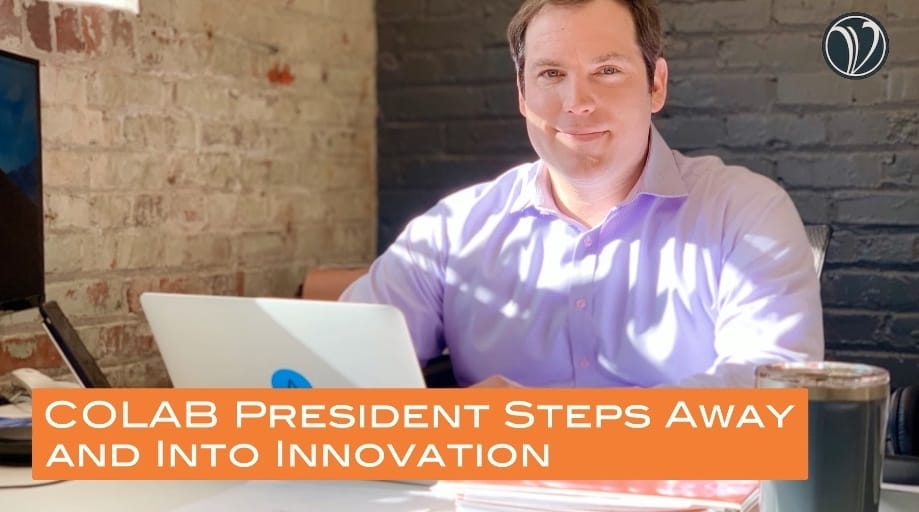Managing for Stakeholders: One Professor’s Primer

What an exciting time to be a CEO! On top of all the ordinary challenges associated with leading an organization, last August the Business Roundtable made a public announcement that kicked off a groundswell of debate about the purpose of a firm. The Business Roundtable membership is a bit like VACEOs, but with larger organizations. Its announcement broadened the Roundtable’s stated purpose of a firm from maximizing shareholder value to creating value for all stakeholders. This was news because for more than 20 years the Roundtable had explicitly embraced the idea that “corporations exist principally to serve shareholders.”
STAKEHOLDERS: DEFINITION AND THEORY
The term ‘stakeholders’ refers to actors who affect or are affected by the firm, including employees, customers, suppliers, communities, and shareholders. While the popular business press has dedicated gallons of ink to this debate in the last few months, the arguments for prioritizing stakeholders (not just shareholders) are already well established. Some of the foundational research in this area originated at UVA’s Darden School, and some of the more recent developments are coming out of University of Richmond’s Robins School.
Because academic writing can often be boring and overly technical for casual reading, this article translates a very brief sampling of recent stakeholder-related research topics and findings from the strategic management journals.
Stakeholder theory is broadly focused on understanding and explaining how organizations form and nurture relationships with a collection of stakeholders. This perspective is unique among strategy theories in that it explicitly acknowledges businesspeople do not and cannot make decisions independent of moral norms and values.
Said another way, business is not a distinct and separable domain from ethics. Every organization has behavioral norms that emerge and evolve in its relationships with stakeholders. This makes stakeholder theory more appropriate for focusing on relationships as the unit of analysis, whereas the dominant economic approaches to strategy research are primarily focused on transactions as the unit of analysis. This distinction adds realism to explanations of strategy in practice because the vast majority of businesspeople describe their most important interactions in the context of relationships rather than transactions.
“DIFFERENT STAKEHOLDERS EXPECT DIFFERENT THINGS”
Why do you think employees choose your firm over others? Why do customers? What do you provide your stakeholders that they cannot get from other firms? All stakeholders have alternatives to participating in your organization, and when they do pick yours, they expect to benefit more in this association than with their next best alternative.
In a free society with open competition for stakeholders of all types (e.g., customers, employees, members, suppliers, communities, etc.), there are no fixed rules that always work for attracting, enrolling, and retaining the stakeholders your organization needs to execute its plan. Instead, the best course of action in practical situations is always conditional. My own research seeks to specify those conditions in a variety of situations.
The first thing to acknowledge is that different stakeholders expect different things. In the marketing domain, we recognize this in the concept of customer segments. Customer segments are subgroups of customers that share some common expectations. Your other stakeholder groups can be segmented this way, too.
It is common to think stakeholders primarily value financial metrics such as prices, wages, discounts, premiums, taxes, and dividends. But in many contexts, research shows stakeholders enter and leave relationships with firms based on other considerations.
POWERFUL EXPECTATIONS
One of the most powerful considerations, for example, is the extent to which they are included in the process of making decisions that affect them. They want you to ask for their opinions and to seriously consider their opinions. They want decision-making processes at your firm to be based on accurate information, to be consistent, and to be revised if they are later found to need correcting. The expectations about your decision-making processes are so critical they are referred to collectively in the research as expectations of procedural justice.
Another set of powerful expectations, collectively called interactional justice, are all about the manner in which your firm treats the stakeholder. Specifically, most people place a high value on being treated with courtesy, dignity, and respect. Stakeholders who do not believe they are getting enough of these things (enough ‘interactional justice’) from you may sever the relationship even if the material financial benefits of working with you are strictly better than their next best alternative.
THE SIMPLE TRUTH: THE GOLDEN RULE APPLIES
These expectations for different forms of value (material, procedural, and interactional justice) play a big role in the stakeholder behaviors that create or(?) destroy value at your firm. Not only does a stakeholder decide to enter, remain, or sever her relationship with your firm based on the comparative amounts of value she gets from you, but if she remains in the relationship, these things also affect how the stakeholder behaves towards your firm. These behaviors can be more beneficial – or more costly – than many executives realize.
The simple truth here is a bit like the ‘golden rule’: when stakeholders believe they are getting more of these forms of value from your firm than they expect in this type of relationship, they are very likely to reciprocate in positive ways back towards your firm. That is, you did something extra-nice for them so they feel compelled to do something extra-nice for you. Positive reciprocity from employees, for example, can show up in doing more or better quality work than you expected. Positive reciprocity from customers might show up as recommending your firm to more prospective buyers.
On the other hand, negative reciprocity from your stakeholders who think you have delivered noticeably less value than they expected can be costly. Employees, for example, might steal from you and believe their behavior is justified if you are treating them poorly. This behavioral perspective on stakeholder relationships integrates philosophy and ethics into economic reasoning to show that when leaders in many settings allocate more benefits to their stakeholders, they initiate cycles of positive reciprocity that benefit the collective network of stakeholders, including the firm itself.
SIX ADDITIONAL INSIGHTS TO CONSIDER
If this work piques your interest, consider these other insights from our research along similar lines:
- Because stakeholders reciprocate positively and negatively towards the firm, firms can (paradoxically) increase their overall financial performance by distributing more value to stakeholders. In this sense, value distribution occurs, in part, before value creation occurs.
- When firms generously allocate value to stakeholders, the stakeholders may reveal more nuanced, detailed information about their private interests and capabilities. This, in turn, enhances the firm’s ability to coordinate value-creating activities among many stakeholders because it can form clusters of complementary value propositions for them.
- Firms that allocate more to stakeholders than the amount (just noticeable) required to stimulate positive reciprocity can experience lower overall firm performance. That is, there are practical economic limits to generous treatment of stakeholders.
- Whereas managers are taught to protect the firm from devious stakeholders by writing careful contracts to govern their interactions, this advice can become a self-fulfilling prophesy. The more you strive to protect yourself, the more protection you will need. An alternative lesson that is associated with better value creation overall is to invest time and energy in learning what each stakeholder expects in the focal context and provide material, procedural, and interactional value to stimulate a cycle of positive reciprocity.
- Business relationships are more than just a series of transactions. Stakeholders perceive varying types of psychological bonds with organizations and subsequently decide the level of effort they will provide to help those organizations reach their goals.
- Firms create or destroy incremental value in mergers and acquisitions based on how they treat the stakeholders of both the acquiring and acquired firms during the post-deal integration period.
This body of research helps explain what we see in the natural world: most successful firms are not exclusively focused on maximizing their quarterly shareholder performance or, alternatively, on ignoring their shareholders. Instead, we see firms serving the interests of many stakeholders.
Glance at the list of recent examples below, and prepare to share how you are serving your various stakeholders at your next CEO roundtable.
- BlackRock recently launched a $50 million Emergency Savings Initiative to help millions of low-to-moderate income people increase their financial security.
- AEP increased its budget for diverse, locally based suppliers by $95 million so that 49% of its total spend is going toward local suppliers.
- Apple committed $2.5 billion to combat the affordable housing crisis in California.
- Bank of America is increasing its minimum wage to $20 per hour.
- Kimberly-Clark is collaborating with diaper bank networks to ensure families in need have access to diapers and wipes.
- UPS will buy more than 6,000 natural gas-powered trucks in order to reduce fleet pollution.

Doug Bosse is The David Meade White Jr. Professor of Business and Chair of the Management Department in the Robins School of Business at University of Richmond. In addition to teaching undergraduate and graduate classes, Doug often facilitates strategic planning and leadership alignment activities for executive teams and boards, and he teaches the Strategic Planning session in the CEO Essentials program, the partnership program of VACEOs and the Robins School of Business Executive Education. He can be reached at dbosse@richmond.edu.
Editors note: Content provided by the Robins School of Business at University of Richmond, a Sponsor of Virginia Council of CEOs.
Top 7 Posts of 2019
Each month we work hard to bring you content of interest to you and news you can use. From tactical takeaways to strategic planning to CEO profiles that intrigue, here are the most-read stories of the year.
What kind of content would you like to see posted to vaceos.org? More CEOs profiles? More business tips? Is there a specific topic you would like covered? Please, let us know!
MOST-READ STORY OF 2019:
COLAB President Steps Away and Into Innovation (Video+)(#1)
For Eddie O’Leary, president of COLAB, one of the best business decisions he’s ever made was to step away from it.
Here’s how the other most-viewed posts faired.
TOP 7 COUNTDOWN: 2019 VACEOs.ORG STORIES OF THE YEAR

(Video+)(#7)
JJ White opens up from his podcast studio about his business and his plans to shape the Council during his tenure as Chair.

by Warren Whitney (VACEOs Sponsor)(#6)
Here are the 6 key questions to ask when assessing your MSP relationships or when evaluating a new one.

by Partner MD (VACEOs Sponsor)(#5)
Running a business can be extremely stressful. Here are 3 steps to help you manage the unique stressors you face.

of Charles E. McCabe Leadership Award (#4)
We are pleased to announce that Arlene Lee, President of R.E. Lee Companies (Charlottesville) has been awarded the Charles E. McCabe Leadership Award.
How to Calculate the Value of Your Business
by Transact Capital (VACEOs Sponsor)(#3)
A company’s worth is impacted by any decisions that boost its EBITDA or reduces perceived risk to the buyer. Here’s how to calculate your earnings.
Fueled for Success: Q&A with Tiger Fuel President Gordon Sutton
(Video+)(#2)
With an employee count topping 270, Tiger Fuel is a successful, large-scale operation. What fuels this company’s success? President Gordon Sutton shares all.

For Eddie O’Leary, president of COLAB, one of the best business decisions he’s ever made was to step away from it.
Tips for Year-End Planning from a Fractional CFO
Do you take your fiscal year-end preparation in stride, or do you dread it? Whether your year end is December 31st, June 30th, or any other date, most likely you need to make sure your financial statements are ready for tax returns and, possibly, for auditors, bankers, and/or investors. The best way to take it all in stride is to ensure you take the proper steps monthly and quarterly for minimal work at the end of your fiscal year.
Here are the critical steps one should take throughout the year to ensure a smooth and painless fiscal year end.
MONTHLY:
- First and foremost, perform a good review each month of the balance sheet and profit & loss statement while information is still fresh in your mind.
- Run comparisons to budget and comparisons to prior year to identify variances that do not look right.
- Review all general ledger activity.
- Reconcile all the balance sheet accounts monthly, which will minimize year end corrections.
- On monthly bank reconciliations, ensure there are no checks over 60-90 days that have not cleared the bank. If there are, start calling vendors to see if they received check and re-issue as necessary.
- Run an Accounts Payable detailed listing and make sure all bills are current. Sometimes you have re-issued a payment for a lost check only to realize at year end that you haven’t taken care of the first payment that was lost or voided.
- Review Accounts Receivable aging and take follow-up actions accordingly.
- Record Investment activity monthly.
- Make copies of any capital purchases and consolidate in either a capital expense profit & loss account or in a category of fixed assets on your balance sheet.
QUARTERLY:
- Reconcile your wages paid to the 941 Employer’s tax form filed. This will ensure that all taxable wages paid have been reflected properly on the 941. If there are adjustments to be made, ensure you can correct before the annual W-2 Wage and Tax Statement are filed for employees.
- Ensure that board and committee minutes required for annual audits are approved and filed.
ANNUALLY:
- Make a reminder to review payroll adjustments necessary to be added to employees W-2’s for other taxable income.
- Review listing of 1099 eligible vendors and ensure you have proper federal identification numbers.
- If you are being audited by an outside firm, request a listing of documents needed in advance of field work.
- If you need an annual inventory count, schedule the date and publish procedures.
- Start a new filing system for the next fiscal year during the 2nd half of your last fiscal month, so that records can be kept separate right from the beginning.
- Review your fixed asset listing for any items that you have disposed of during the year.
** Above all, ensure that you reconcile your bank statement monthly. **
A key point is to take corrective action while transactions are still clear in your mind. It’s much harder to figure out adjustments if the details are fuzzy.

Jill Swinger is a director of Warren Whitney and is primarily engaged by organizations requiring financial management analysis. Jill offers a well-rounded business background and brings more than 30 years experience in both public accounting and private industry finance. Learn more.
Editors note: Image and content provided by Warren Whitney. This post article was originally posted here. Warren Whitney is a Sponsor of Virginia Council of CEOs.
Beyond Passwords: 4 Ways to Stay Ahead of Cyber Crime
Think cyber criminals are most interested in targeting big business? Think again. The U.S. Small Business Association (SBA) reports that 43% of the nearly 42,000 online security incidents that took place around the world last year targeted small businesses.
No matter how skeptical you may be of the stats heard around the world, data breaches can lead to stolen customer data and financial losses, and can severely damage brands. Businesses can be crippled for days by a breach – some taken down altogether. It’s undoubtedly a growing problem for businesses of all sizes.
Data security is Sklar Technology Partners’ primary mission. President Randy Sklar reports that his business has grown steadily busier in the past three years. Fortunately, innovation and proprietary services have kept his clients ahead of the bad guys – for now.
What are some of the biggest threats that small and mid-sized businesses face? “Ransomware remains a major threat, and wire fraud is something we hear about, as well,” says Sklar. “The biggest threat I hear about is credential stuffing. A local salon just lost $12,000 in a payroll heist, and [the owner] was using breached passwords for her ADP and email accounts. The cyber crook tried to get $80,000 and made off with $12,000.”
REGULAR PASSWORD CHANGES ARE NOT ENOUGH
We all know our passwords should be a complicated jumble of characters and numbers, and that we should update them and our business software regularly. Still, if you’re concentrating only on those actions, you could be leaving your business exposed to hackers. One of your best defenses is a solid offense. Here are four ways to get started.
STEP 1) KNOW WHERE YOU’RE VULNERABLE: PERFORM (REGULAR) RISK ASSESSMENTS
A formal assessment by a professional will help you identify your vulnerabilities and the conditions required to exploit them. A sound assessment will help you understand the likelihood that an attack would succeed and the potential impact it would have on your business. Sklar suggests performing a risk assessment annually or if any major changes happen to your digital assets, like implementing a new application.
“A typical assessment focuses on technology issues and the assessment should be solely focused on the asset. In this case, digital asset. And the report should be an easy-to-read graph outlining the impact vs. likelihood an asset will be compromised or lost,” says Sklar, who is a member of Virginia Council of CEOs. Sklar Technologies offers a good risk assessment discover tool here.
STEP 2) CREATE A FORMAL CYBERSECURITY PLAN: HERE’S A RESOURCE
You know where you’re vulnerable. Now formulate a plan that outlines the procedures and policies your organization will follow to prevent and recover from a data breach. Not sure where to begin? We found a good customizable cybersecurity planning tool designed by the FCC. Or, better yet, contact a trusted local resource for plan set up and training.
STEP 3) HAVE A SOUND DETECTION SYSTEM IN PLACE
We’re often focused on keeping hackers out via firewalls, antivirus software, etc., but we come up short when it comes to breach detection. “Nothing is secure without detection,” says Sklar. “Just like at home, you want to have alarms, motion lights and barking dogs to detect the intruder. Make sure the person or organization in charge of your cybersecurity is comfortable in their ability to detect and quickly respond to a breach.”
STEP 4) MAKE EMPLOYEE EDUCATION & TRAINING A BUSINESS PRIORITY
A key component of any business’ cybersecurity defense system is to make cybersecurity a priority for leadership and staff. Show your commitment. Keep it short, simple, and fun! For example: Why not a game show or competition? Avoid boring videos and lectures, they are ineffective. Make it a team building opportunity, if you can. Cover topics like:
- Your password policy and why it’s important
- Your software policy and update process and why they’re important
- Cybersecurity best practices
- Your plan of action, should your business or customer data become exposed
October is Cyber Security Month! Don’t let a cyber crime cripple your business or, worse, bring it down. Make a serious commitment to assessment, a comprehensive detection system and plan, and ongoing education.
Additional resources used for this article: “3 Simple Things to Protect Against Cyberattacks” by Anita Campbell.
How to Know If a Fractional CFO Is Right for Your Business
You are the CEO of a growing business. Do you need to:
- Spend more time in areas of the business where you add the most value?
- Maximize cash?
- Add an operational finance perspective to your team?
- Update your strategic plan?
- Raise capital to grow your business?
- Add a trusted advisor to your executive team?
- Develop an exit strategy for your business?
- If you answered yes to one or more of these questions, it could be time to get an experienced CFO on your team.
You may have thought about hiring a full-time CFO but held off given cost. Or perhaps you were concerned that you do not have enough work to keep a full-time CFO challenged. There is an alternative: You can engage an experienced CFO on a part-time or project basis.
By hiring a fractional CFO, you’re instantly gaining access to all the knowledge, experience and lessons learned by this CFO over a career. All at a significant cost savings to you.
Jay Nathanson, COO of Image Group, found it to be “a very, efficient way to use expertise.” Adding, “It really became a great opportunity for me to be able to grow the business without making the investments of full-time people.”
Building on my 35 years of experience, including serving as a full-time CFO for six companies and as a fractional CFO for others, I share several scenarios which describe situations where a fractional CFO might be able to help you.
YOU KNOW YOU NEED A FRACTIONAL CFO WHEN… (7 SCENARIOS)
Scenario #1: You Need to Spend More Time in Areas Where You Add the Most Value
If you’re spending more time in planning and forecasting, contract negotiations and interactions with investors, and less time with customers, in strategy development and in other areas where you excel, it’s time to engage a seasoned CFO. This executive will free you up, enabling you to add greater value to the business.
Scenario #2: You Need to Maximize Cash
You understand that cash is king. You need the ability to forecast future performance, staying on top of cash forecasts, debt covenants, receivables and payables. You also need creativity in the use of bank and other kinds of debt. An experienced CFO can help you maximize cash at the lowest cost.
Scenario #3: You Need an Operational Finance Perspective
You are getting accurate historical financial information; however, you are not getting meaningful analysis and insights from such information to drive your business forward. The right CFO will bring significant operational finance experience to the business, enabling you to fully understand historical performance, get the right metrics in place and more.
Scenario #4: You Need to Update Your Strategic Plan
As your business grows, there are many places where you can invest limited resources: sales and marketing, product development, customer success and more. To get the best return requires an understanding of customer issues, customer and product profitability, the competitive landscape and more. An experienced CFO can link financials and strategy, helping develop a plan which will increase your odds of success.
Scenario #5: You Need Capital to Grow Your Business
To execute your plan, you need to invest more in sales and marketing, customer success and new product development. This requires additional capital. Engaging a CFO skilled in raising capital will help you negotiate the best deal, minimizing dilution.
Scenario #6: You Need a Trusted Advisor
As the business grows, you are encountering a range of issues and questions, from personnel (e.g., what incentive program is right?) to tax (e.g., do I have sales or use tax exposure?). You need someone on your team with significant experience across many businesses and circumstances, someone who understands and has been around different C-Suite roles. Engaging an experienced CFO will help you get to the right answer quickly.
Scenario #7: You Need an Exit Strategy
Positioning your business for sale is not cut and dry. If you’re considering a sale in the next few years, now is the time to prepare. To get the most value, you need the advice of a CFO skilled in buying and selling companies.

Bobby Jenkins, Managing Director, Fahrenheit Advisors (Charlottesville), is an accomplished executive with 35 years’ experience and a demonstrated track record in diverse businesses and circumstances. Working with public and private companies, large and small, he has played a key role in increasing equity value for stakeholders. His experience and skills position him well now to add value to Fahrenheit clients, particularly in engagements related to business planning, capital raises, performance management and restructuring.
EDITOR’S NOTE: Image and content provided by Fahrenheit Advisors. This post article was originally posted here. Fahrenheit Advisors is a Sponsor of Virginia Council of CEOs.













Recent Comments